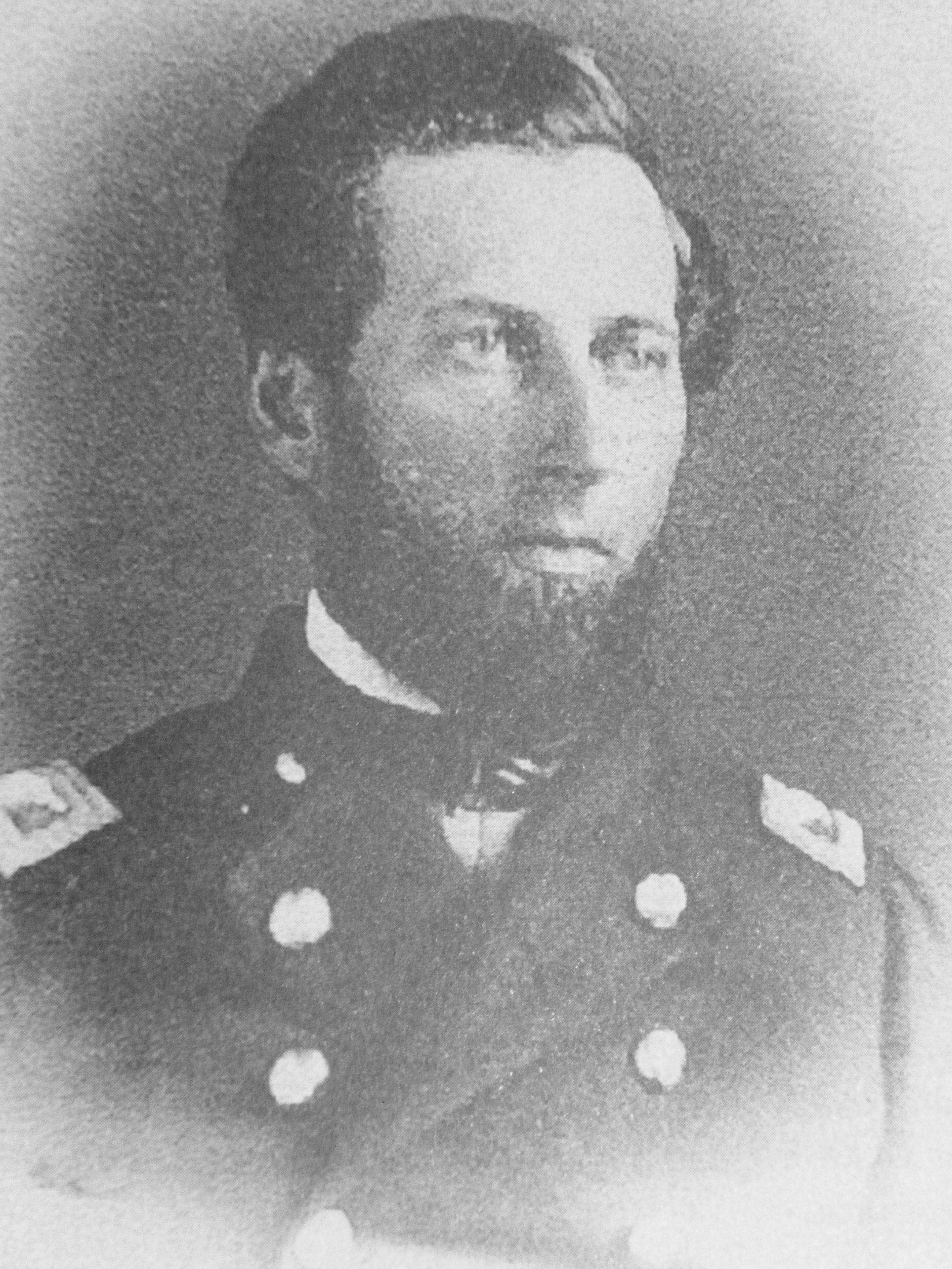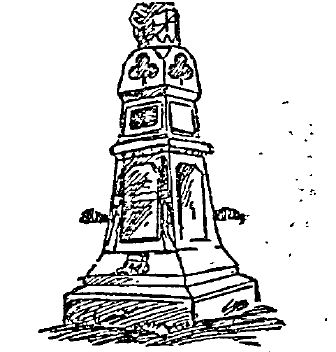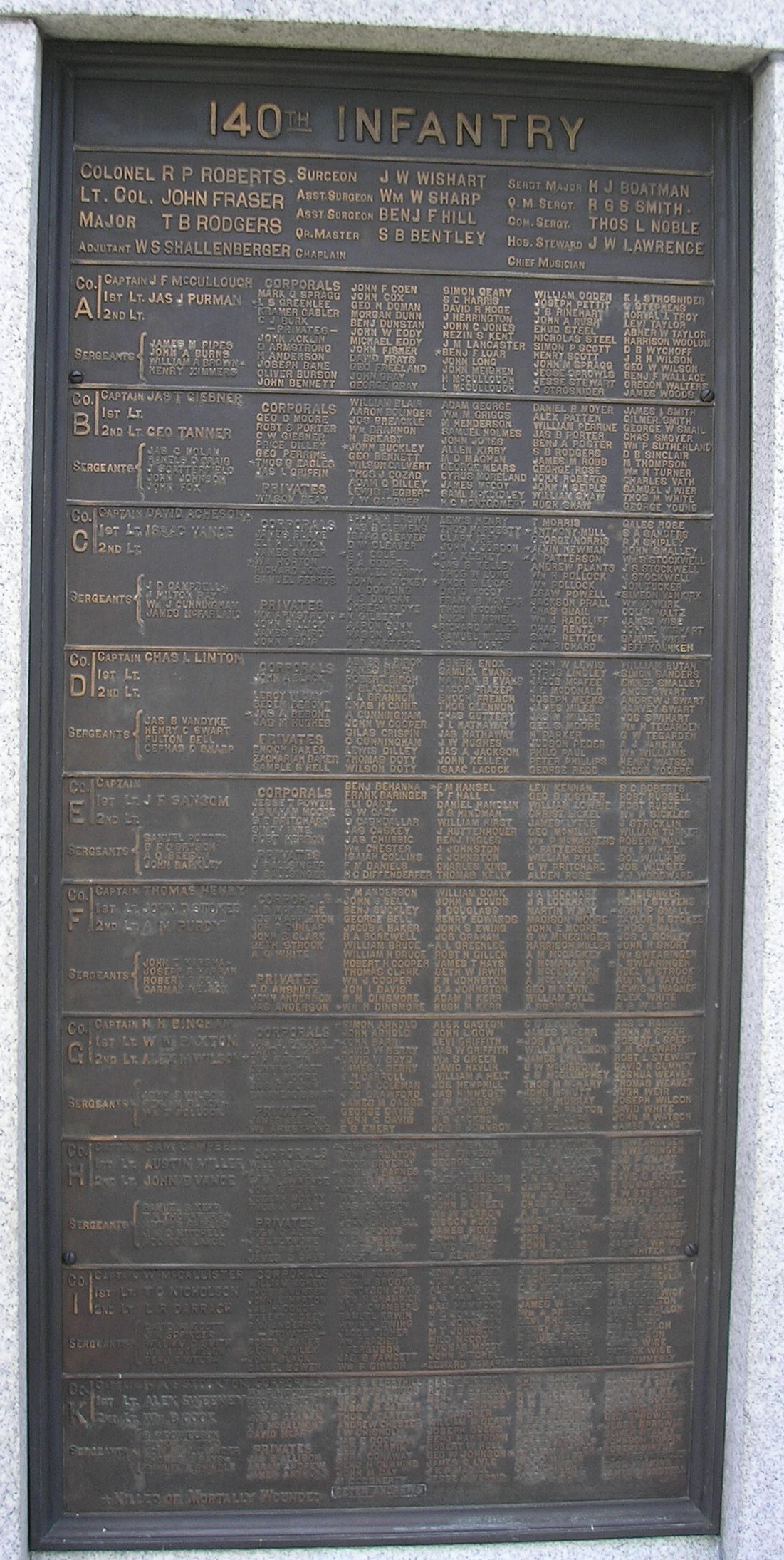Monuments at Gettysburg – 140th Pennsylvania Infantry
Posted By Norman Gasbarro on April 6, 2015
The 140th Pennsylvania Infantry Monument at Gettysburg is located south of the town of Gettysburg on Sickles Avenue. It was dedicated in 1889 by the Commonwealth of Pennsylvania and is the second monument to this regiment at Gettysburg; the first monument is located at the same place and was dedicated in 1885 by the regiment’s survivors and friends.
The drawing of the monument pictured above is from a Philadelphia Inquirer article of 11 September 1889.
A picture of the monument can be seen on Stephen Recker’s Virtual Gettysburg Web Site which has more information about the monument and the 140th Pennsylvania Infantry.
A full description of the second monument, its GPS Coordinates, additional photographs, and some of the history of the 140th Pennsylvania Infantry, can be found on the Stone Sentinels Web Site. There is also a picture and information about the first monument. In addition, information is provided about Medal of Honor recipients from this regiment: (1) Lieutenant James L. Purman; and (2) Sergeant James Pipes.
——————————-
The monument dedication ceremonies as well as a brief history of the regiment were included in the Philadelphia Inquirer article of 11 September 1889:
Lost One Half its Men.
The 140th did its first important work at Gettysburg, when it met the enemy on the first day. Its Colonel, Richard P. Roberts, was promoted to the command of the brigade, and was killed. The regiment’s fighting occurred on the left centre, stretching away from the heights above the cemetery towards Round Top. They swept the enemy back from the cover of the woods, and the ridge beyond the wheat field, a position of great natural strength, was gallantly carried. The regiment lost half its men in that conflict. Quartermaster Sergeant went into the fight, though not yet mustered in, and was killed. Wounded Lieutenant Putnam gave a rebel his watch to lift him into the shade. Captain Campbell’s sword was seized by a rebel as he fell. Lying still the captain told the rebel he needed it, and when the rebels were driven back he got away. The 140th fought its last battle at Farnville, 7 April 1865, two days before Lee’s surrender. Lieutenant Colonel John Frazer was made colonel 4 July at Gettysburg. Lieutenant Colonel Thomas B. Rodgers and Adjutant W. S. Shallenberger were captured there 2 July.
At 1:30 P.M., in the court house, the annual reunion of the 147th Pennsylvania Volunteers Regimental Association will be held. The annual oration will be delivered by Rev. J. H. Boatman, after which the regiment will proceed to “the Loop,” where the monument, erected to the memory of the 241 comrades, is located. J. H. Short will unveil the monument, Hon. W. S. Shallenberger will deliver the address detailing the history of the part taken in the battle by the regiment, Chaplain John Lynn Milligan will offer the dedicatory prayer, Comrade D. M. Pry will transfer the monument to the care of the Memorial Association, after which the benediction will be pronounced by the Rev. J. A. Wright.
——————————

Richard P. Roberts
Colonel Richard Petit Roberts, an attorney from Beaver County, Pennsylvania, born 5 June 1820, commanded the 140th Pennsylvania Infantry at Gettysburg. He was killed in action on the second day of the battle and Lieutenant Colonel John Fraser then commanded the regiment.
Carolyn [Henry] Roberts, the wife of Colonel Roberts, died after a lengthy illness on 4 February 1862, and at that point he began to think about temporarily abandoning his legal career and joining the army. By 21 August 1862, he had helped recruit several companies of the 140th Pennsylvania Infantry in Beaver County, and took command of Company F as its Captain. Controversy erupted in the ranks after Roberts was promoted to headquarters as Colonel of the regiment, 12 September 1862, when it was claimed by some of the company captains that Roberts was aloof and knew little about military affairs. Perhaps it was these complaints about him that caused him to apply for several leaves to return to Beaver County to take care of personal and legal business. The final leave was granted in late June 1863, but he returned from that leave in time to command the 140th Pennsylvania Infantry, and be killed in action on the Gettysburg battlefield. The spot at which he fell is marked by a personal monument to him as well as the regiment. No record has been found indicating that he left any survivors who were eligible to collect pension benefits. He is buried at the Beaver Cemetery, Beaver County, Pennsylvania.
Additional information about Colonel Roberts can be found at his Findagrave Memorial. See also, Richard P. Roberts, Civil War Hero of Gettysburg, by Mark R. Grago, Beaver County Writers Guild.

John Fraser
John Fraser was a Scottish-born American educator who joined the 140th Pennsylvania Infantry on 22 August 1862 and was mustered into service at Pittsburgh as Captain of Company G. On 4 September 1862, he was promoted to headquarters as Lieutenant Colonel of the regiment. After Gettysburg, he continued to lead the regiment but was wounded twice in May 1864, once at the Wilderness and once at Spottsylvania. In June 1864 in the Siege of Petersburg, he was taken prisoner and sent to Charleston and then Libby Prison in Richmond. Following his release, he returned to action where he was breveted Brigadier General on 13 March 1865 and honorably discharged with the regiment on 31 May 1865.
After the Civil War, Fraser became the third president of Penn State University, serving from 1866-1868, and later as chancellor of the University of Kansas, 1867-1874. He died on 4 June 1878 at Pittsburgh but is buried at Green Ridge Cemetery, Kenosha, Kenosha County, Wisconsin.
For further information about him, see his Wikipedia article and his Findagrave Memorial.
——————————
Around the base of the Pennsylvania Memorial at Gettysburg are a series of plaques which, by regiment and company, note the names of every soldier who was present at the Battle of Gettysburg. The plaque for the 140th Pennsylvania Infantry is pictured below. By clicking on the plaque it should enlarge so the names can be more clearly read. If a name does not appear, it could be that the soldier did serve in the 140th Pennsylvania Infantry, but was not part of the regiment during its days at Gettysburg. There could also be errors on the plaque.
 ;
;




Comments